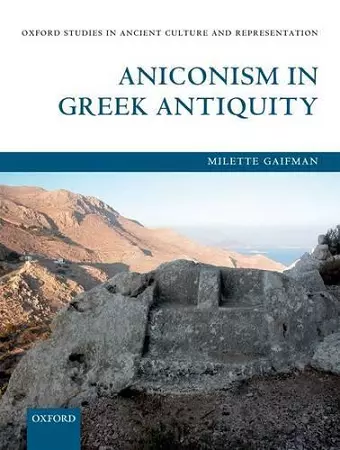Aniconism in Greek Antiquity
Format:Hardback
Publisher:Oxford University Press
Published:31st May '12
Currently unavailable, and unfortunately no date known when it will be back

In this volume, Milette Gaifman explores a phenomenon known as aniconism - the absence of figural images of gods in Greek practiced religion and the adoption of aniconic monuments, namely objects such as pillars and poles, to designate the presence of the divine. Shifting our attention from the well-known territories of Greek anthropomorphism and naturalism, it casts new light on the realm of non-figural objects in Greek religious art. Drawing upon a variety of material and textual evidence dating from the rise of the Greek polis in the eighth century BC to the rise of Christianity in the first centuries AD, this book shows that aniconism was more significant than has often been assumed. Coexisting with the fully figural forms for representing the divine throughout Greek antiquity, aniconic monuments marked an undefined yet fixedly located divine presence. Cults centered on rocks were encountered at crossroads and on the edges of the Greek city. Despite aniconism's liminality, non-figural markers of divine presence became a subject of interest in their own right during a time when mimesis occupied the center of Greek visual culture. The ancient Greeks saw the worship of stones and poles without images as characteristic of the beginning of their own civilization. Similarly, in the Hellenistic and Roman periods, the existence of aniconism was seen as physical evidence for the continuity of ancient Greek traditions from time immemorial.
In her long-awaited new book, Milette Gaifman provides an exceptionally lucid, rich and provocative appraisal of such ideas in Greek historical perspective. * Michael Squire, Sehepunkte *
Milette Gaifman's book (originally a dissertation) invites us to revise our assumptions about Greek aniconism. Her meticulous study offers the first comprehensive survey of the phenomenon of aniconism in ancient Greece, and should prove of great interest not only to classicists and classical archaeologists but especially to any scholar concerned with religious art, representation of the divine, or ancient and modern theories on art and religion, because the notion of 'aniconism' has been so pervasive in scholarly fields not directly concerned with the ancient Greek world. * Daniel Barbu, Bryn Mawr Classical Review *
ISBN: 9780199645787
Dimensions: 250mm x 194mm x 26mm
Weight: 1012g
376 pages